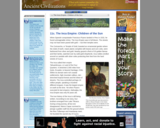
very useful to understand liquid
- Subject:
- Applied Science
- Material Type:
- Reading
- Author:
- Kevin Maximo
- Matheo Ryan
- May Ann Antiquisa
- Date Added:
- 03/26/2020

very useful to understand liquid

In this activity, students determine their own eyesight and calculate what a good average eyesight value for the class would be. Students learn about technologies to enhance eyesight and how engineers play an important role in the development of these technologies.

Student groups create working radios by soldering circuit components supplied from AM radio kits. By carrying out this activity in conjunction with its associated lesson concerning circuits and how AM radios work, students are able to identify each circuit component they are soldering, as well as how their placement causes the radio to work. Besides reinforcing lesson concepts, students also learn how to solder, which is an activity that many engineers perform regularly giving students a chance to be able to engage in a real-life engineering activity.

Students conduct a simple experiment to model and explore the harmful effects of acid rain (vinegar) on living (green leaf and eggshell) and non-living (paper clip) objects.

Students construct rockets from balloons propelled along a guide string. They use this model to learn about Newton's three laws of motion, examining the effect of different forces on the motion of the rocket.

Students are introduced to air masses, with an emphasis on the differences between and characteristics of high- versus low-pressure air systems. Students also hear about weather forecasting instrumentation and how engineers work to improve these instruments for atmospheric measurements on Earth and in space.

Students learn how nanoparticles can be creatively used for medical diagnostic purposes. They learn about buckminsterfullerenes, more commonly known as buckyballs, and about the potential for these complex carbon molecules to deliver drugs and other treatments into the human body. They brainstorm methods to track buckyballs in the body, then build a buckyball from pipe cleaners with a fluorescent tag to model how nanoparticles might be labeled and detected for use in a living organism. As an extension, students research and select appropriate radioisotopes for different medical applications.

The lesson begins with a demonstration introducing students to the force between two current carrying loops, comparing the attraction and repulsion between the loops to that between two magnets. After formal lecture on Ampere's law, students begin to use the concepts to calculate the magnetic field around a loop. This is applied to determine the magnetic field of a toroid, imagining a toroid as a looped solenoid.

Students analyze the relationship between wheel radius, linear velocity and angular velocity by using LEGO(TM) MINDSTORMS(TM) NXT robots. Given various robots with different wheel sizes and fixed motor speeds, they predict which has the fastest linear velocity. Then student teams collect and graph data to analyze the relationships between wheel size and linear velocity and find the angular velocity of the robot given its motor speed. Students explore other ways to increase linear velocity by changing motor speeds, and discuss and evaluate the optimal wheel size and desired linear velocities on vehicles.

Students learn more about how muscles work and how biomedical engineers can help keep the muscular system healthy. Following the engineering design process, they create their own biomedical device to aid in the recovery of a strained bicep. They discover the importance of rest to muscle recovery and that muscles (just like engineers!) work together to achieve a common goal.

adding abstract here now and yet again on backend


By the end of this section, you will be able to:
Define species and describe how species are identified as different
Describe genetic variables that lead to speciation
Identify prezygotic and postzygotic reproductive barriers
Explain allopatric and sympatric speciation
Describe adaptive radiation

By the end of this section, you will be able to:
Describe pathways of species evolution in hybrid zones
Explain the two major theories on rates of speciation

By the end of this section, you will be able to:Describe how the present-day theory of evolution was developedDefine adaptationExplain convergent and divergent evolutionDescribe homologous and vestigial structuresDiscuss misconceptions about the theory of evolution

By the end of this section, you will be able to:
Compare homologous and analogous traits
Discuss the purpose of cladistics
Describe maximum parsimony


By the end of this section, you will be able to:
Discuss the need for a comprehensive classification system
List the different levels of the taxonomic classification system
Describe how systematics and taxonomy relate to phylogeny
Discuss the components and purpose of a phylogenetic tree

By the end of this section, you will be able to:
Explain the different ways natural selection can shape populations
Describe how these different forces can lead to different outcomes in terms of the population variation
